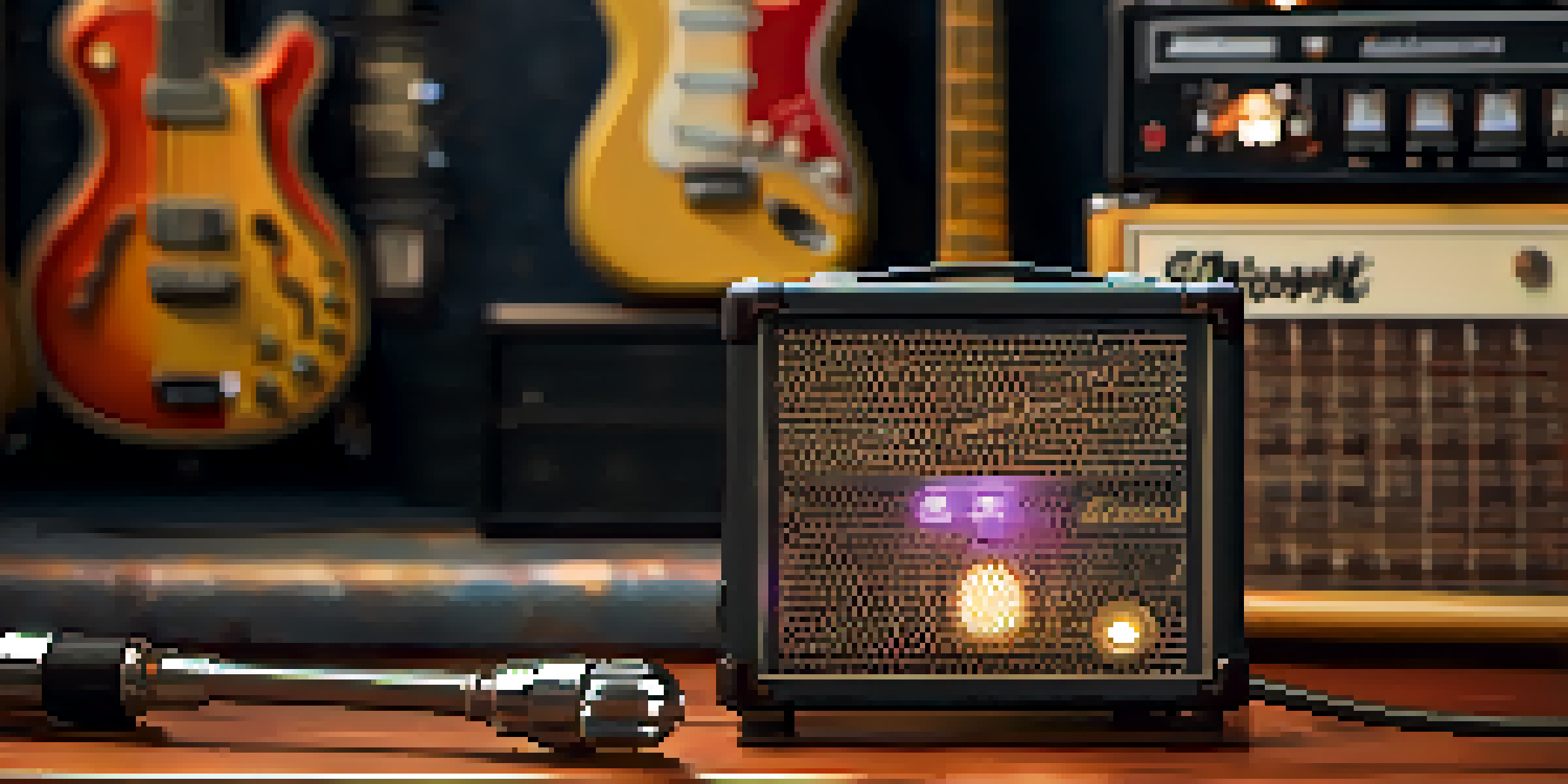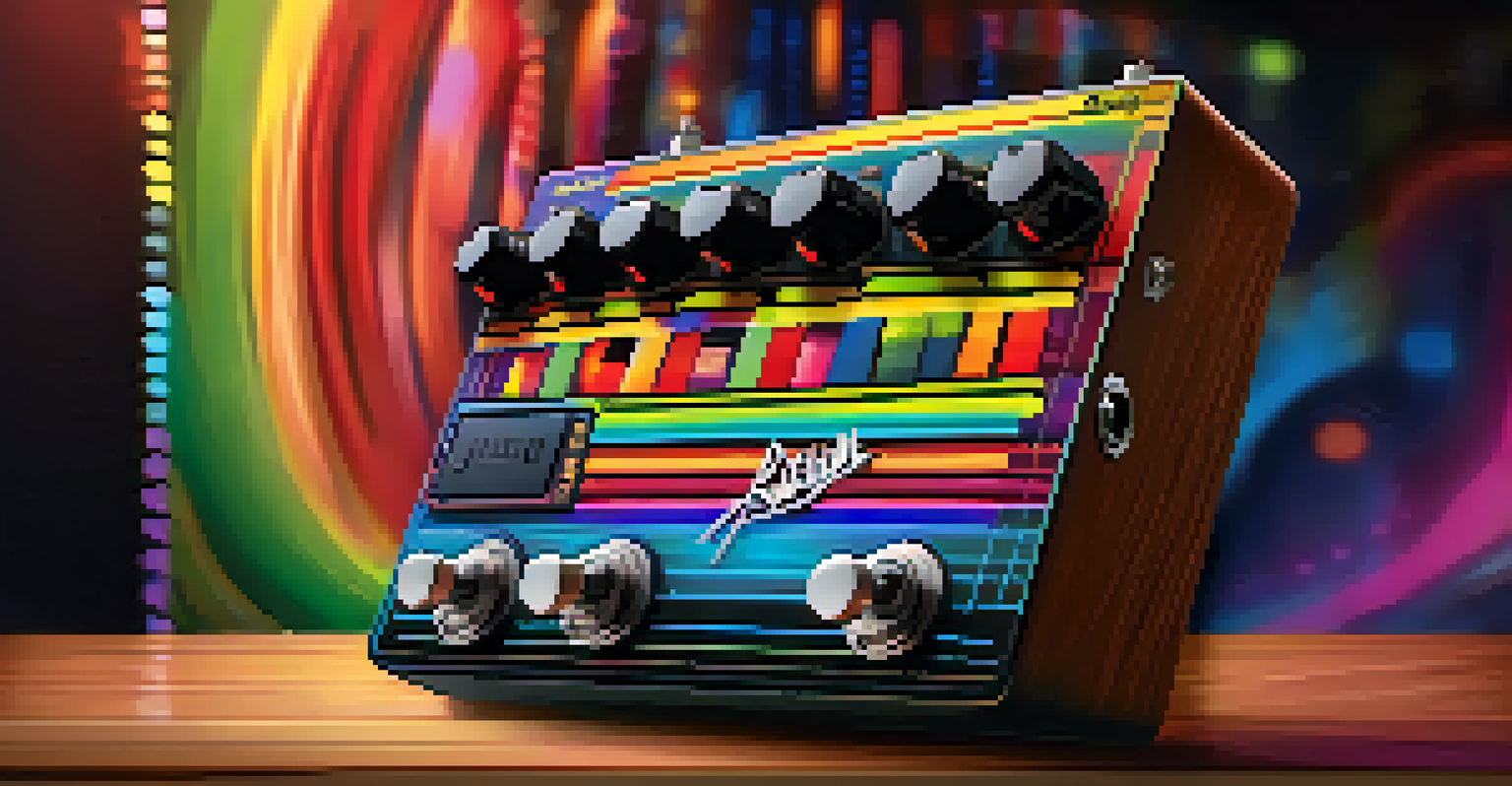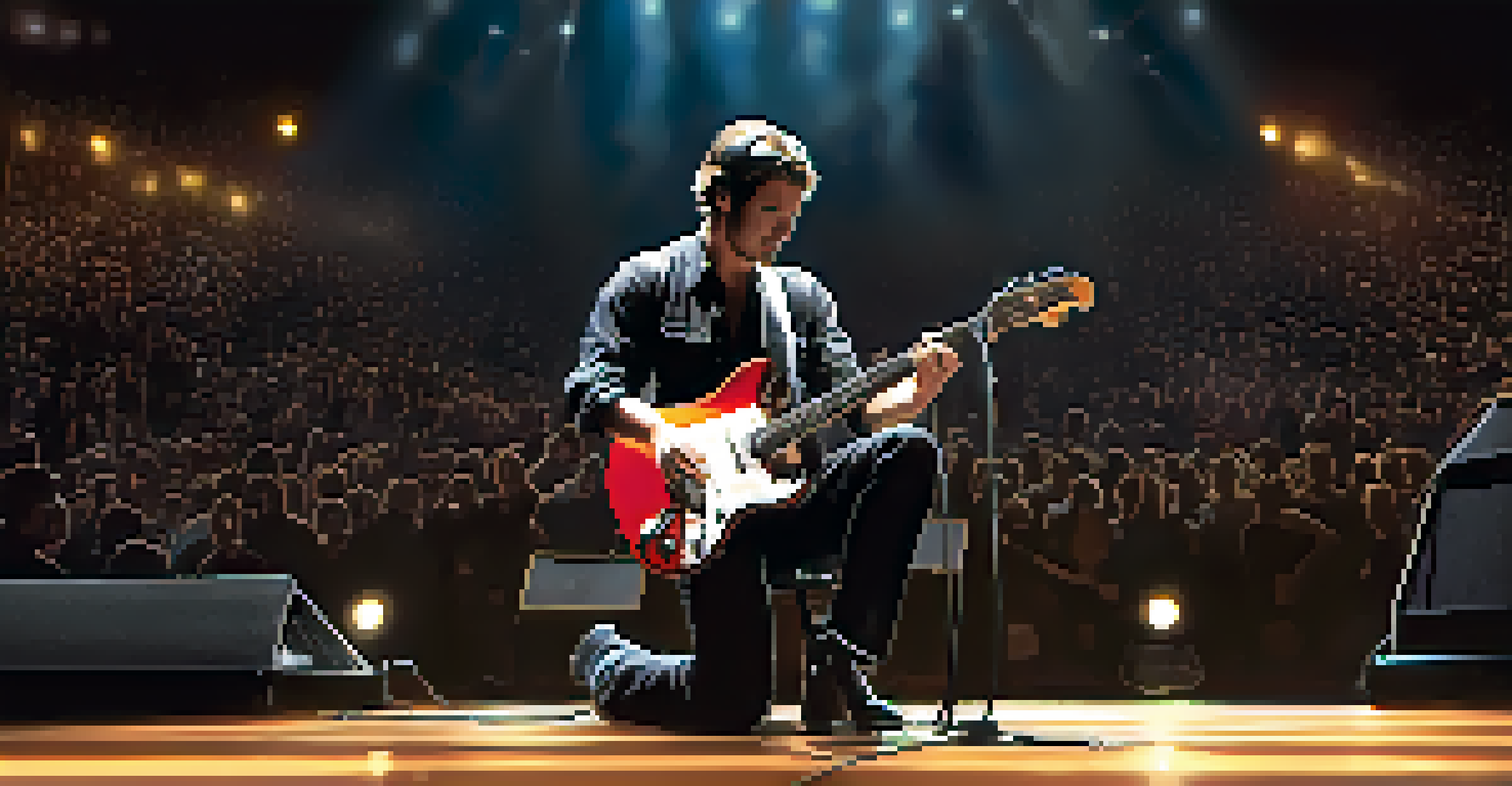Exploring Analog vs Digital Delay Pedals: Key Differences

What Are Delay Pedals and Why Use Them?
Delay pedals are essential tools for musicians, particularly guitarists, allowing them to create echoes and layered sounds. They work by recording the input signal and playing it back after a set duration, which can add depth and texture to your music. Whether you're jamming at home or performing live, a delay pedal can transform your sound dramatically.
The beauty of music is that it connects people, and delay pedals enhance that connection by adding layers and depth to sound.
The effect of delay can range from subtle reverb-like enhancements to long, cascading echoes that fill the sonic space. This versatility makes delay pedals popular across various genres, from rock to ambient music. Understanding how delay works is crucial for any musician looking to enhance their sound.
Ultimately, the choice between analog and digital delay pedals boils down to your personal preference and the specific sound you're aiming for. Both types offer unique characteristics that can shape your music in different ways.
Analog Delay Pedals: Characteristics and Sound
Analog delay pedals are known for their warm, lush sound, often characterized by a slight degradation in audio quality that can add a vintage feel to your music. They typically use tape or bucket brigade devices (BBD) to create the delay effect, which contributes to their unique tonal quality. Many musicians love the organic sound of analog delays, as they can evoke a sense of nostalgia.

The response of analog delays can be more varied than digital ones, with the repeats often getting darker and more distorted as they decay. This can create a beautiful, atmospheric layer to your playing, especially in genres like blues and rock. Many players appreciate the unpredictability of analog delays, as they can lead to creative new sounds during improvisation.
Types of Delay Pedals Explained
Delay pedals, both analog and digital, allow musicians to create unique soundscapes with echoes and layered effects.
However, analog delays often come with limitations, such as shorter delay times and fewer features compared to digital pedals. If you’re looking for straightforward, warm echoes without the bells and whistles, an analog delay might be your best bet.
Digital Delay Pedals: Precision and Versatility
Digital delay pedals provide a level of precision and versatility that many modern musicians value. They utilize digital signal processing to deliver clear, crisp sounds with longer delay times and various effects. This makes them ideal for players who want to experiment with complex rhythms and soundscapes.
Music is the shorthand of emotion, and delay pedals give musicians the tools to express those emotions more fully.
One of the significant advantages of digital delays is their ability to store presets and create multiple delay types in one pedal. For instance, you can switch between a simple slapback echo and a long, ambient delay with just a click of a button. This flexibility can be a game-changer during live performances when quick adjustments are needed.
However, some purists argue that digital delays lack the warmth and character of their analog counterparts. While they may not have the same vintage vibe, the clarity and control offered by digital delays make them a favorite among many modern musicians.
Key Differences in Sound Quality
When comparing the sound quality of analog and digital delay pedals, the difference lies primarily in the tonal characteristics. Analog delays often produce a warmer, more rounded sound, while digital delays tend to be cleaner and more precise. This can significantly impact how the delays blend with your overall tone.
For example, if you're playing a smooth jazz piece, an analog delay might give you that rich, vintage vibe you're after. Conversely, if you’re performing in a more experimental electronic setup, a digital delay could offer the clarity and versatility needed to create intricate sound layers.
Analog vs. Digital Delays
Analog delays offer warm, vintage sounds while digital delays provide precision and versatility for modern music.
Ultimately, the best choice depends on your musical style and personal taste. Trying out both types can help you discover which sound resonates with you the most.
Control and Customization Options
Control and customization are where digital delay pedals often shine, providing a plethora of options for tweaking your sound. With features like tap tempo, modulation, and feedback controls, digital delays offer musicians the ability to fine-tune their effects to match their unique playing style. This level of control can be a significant advantage during live performances.
In contrast, analog delay pedals tend to have simpler interfaces, typically featuring just a few knobs for delay time, feedback, and mix. While this can limit customization, many players enjoy the straightforward nature of analog pedals, allowing them to focus more on their music rather than getting lost in a sea of options.
Ultimately, the decision comes down to whether you prefer simplicity or the ability to dive deep into your effects. Both styles can produce fantastic results, depending on your preferences.
Price and Value Considerations
When considering price and value, analog delay pedals are often more affordable than their digital counterparts. This makes them an appealing option for beginner musicians who want to explore delay effects without breaking the bank. While you can find high-end analog pedals, many budget-friendly models still offer great sound quality.
Digital delay pedals, on the other hand, can range significantly in price depending on features and brand. While some entry-level digital delays are relatively inexpensive, high-end models with advanced features can be quite costly. However, many musicians find that the investment pays off in terms of versatility and sound quality.
Choosing the Right Delay Pedal
Selecting the ideal delay pedal depends on personal preference, musical style, and desired features.
Ultimately, it’s important to consider your budget and what you need from a delay pedal. Assessing how often you'll use the pedal and the sounds you want to achieve can help determine the best value for your needs.
Choosing the Right Delay Pedal for You
Choosing the right delay pedal often comes down to personal preference and the specific sound you're aiming for. If you love the warmth and character of vintage sounds, an analog delay might be the perfect fit for you. On the other hand, if you crave versatility and precision, a digital delay could be your best bet.
Consider the type of music you play and how you plan to use the delay pedal. If you're performing live, you may want something with easy-to-use controls and quick adjustments. Conversely, for studio work, a digital delay's customization options might better suit your needs.

Ultimately, the best way to find the perfect delay pedal is to try out both types in person. Experimenting with different sounds and features can lead you to the perfect pedal that complements your musical style.